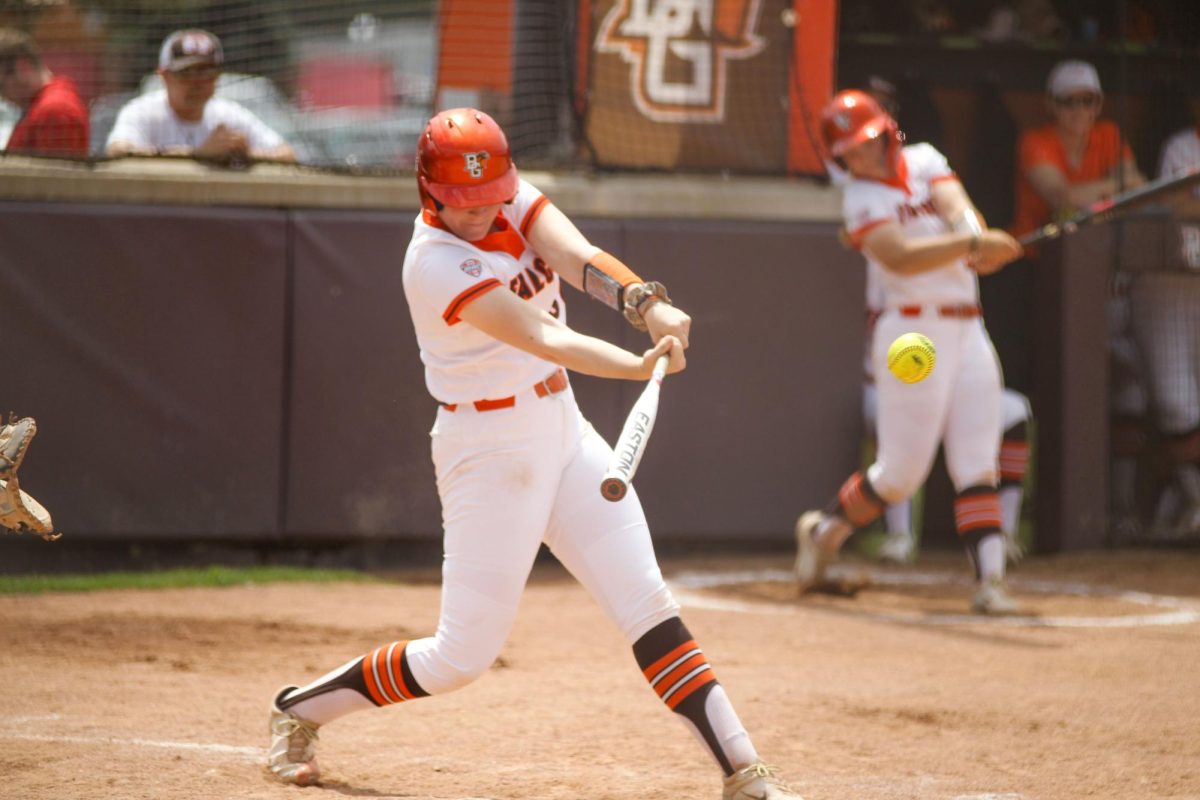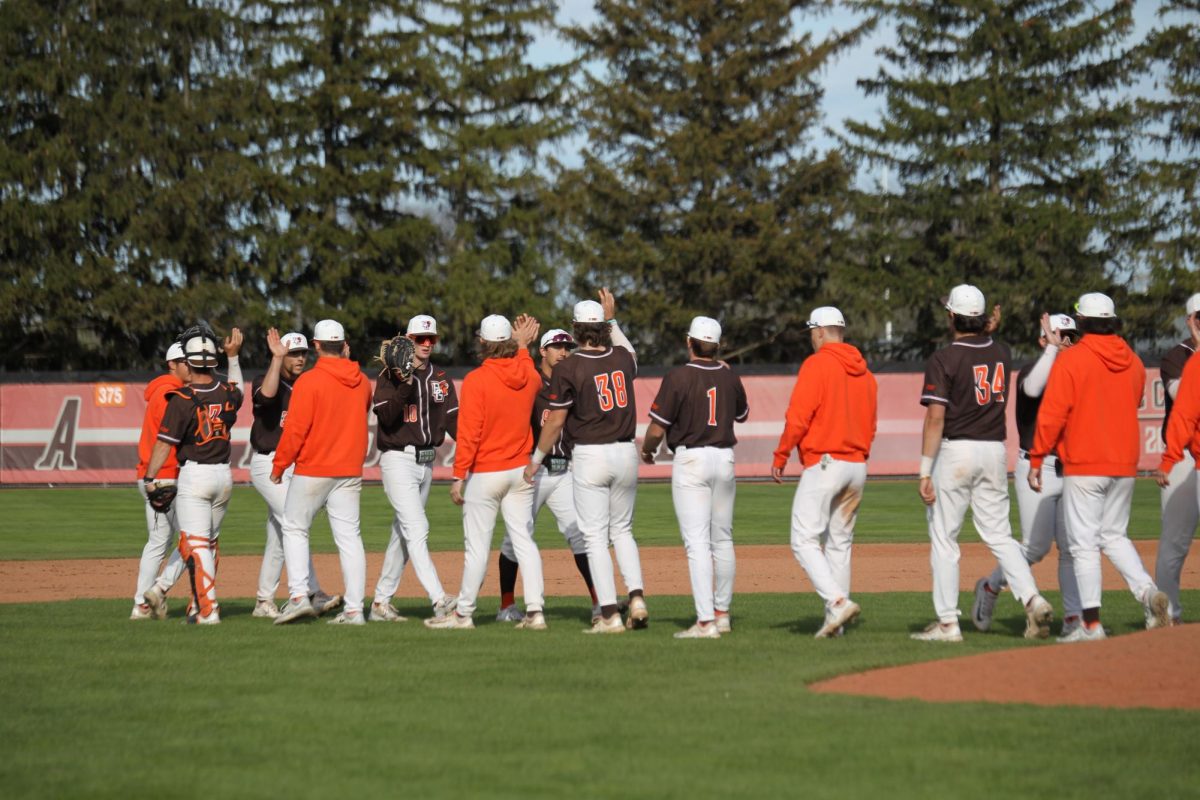The City traffic commission will hold a public meeting tonight to discuss recent changes in Clough Street traffic flow.
The meeting, held at 7:00 in Council chambers, will be attended by several Clough residents.
John Mosena, who is almost completely blind, will be paying close attention to the results.
“Getting across Campbell Hill Road right now is scary,” said Mosena, who lives in the Stadium View apartment complex, and cannot legally drive. “I have to stop and listen. Really I think the stop sign on Campbell Hill and Clough is necessary.”
“There are a lot of people in Stadium View that walk, and a lot of elderly people,” he said. “Not all of them have visibility problems, but a lot of them aren’t moving very fast. And we have a lot of kids who walk to Crim Elementary.”
The changes as implimented so far are based on a study by the Mannik ‘ Smith consulting firm. They have faced mixed reviews from neighborhood residents.
“There was an editorial in the paper about the street being a drag strip,” said Clough resident Steve Langendorfer, who lives between State and Williams Streets, where stop signs on Clough have been removed. “but for the most part cars are only a few miles per hour above the speed limit.”
Other Clough residents have been less satisfied with the situation. Several Stadium View residents and employees were vocal at a City Council meeting last week, presenting a petition on the issue.
City officials say they understand the anger, but that residents have the wrong concept of stop signs’ funtions.
“Unfortunately the purpose of a stop sign is not to slow down traffic,” said police Chief Thomas Votava. “Their purpose is to make intersections safer.”
Votava said the study’s lack of a pedestrian count was within state regulations.
“You have to have traffic flow. Under state warrants you have to have 200 vehicles per hour over eight hours and Clough didn’t meet that warrant.”
Mosena questions whether the Campbell Hill sign removal will help traffic flow.
“Given that there’s a stop light a block away [on Wooster], this sign won’t have any effect on traffic flow,” Mosena said. “It hasn’t before.”
Langendorfer asserted that he agrees in principle with Votava, but disputes the methedology of the Mannik ‘ Smith study. The initial data for the study was collected from Monday through Thursday during a week in late March.
Langendorfer says these days of the week are not peak traffic days.
“You really should gear your study toward a maximum traffic amount, not the average,” Langendorfer said. “We were getting last Friday close to 500 cars an hour when I was gauging speed. And that’s 500 cars an hour in the summer when there’s less traffic. That will get higher when students come back in a few weeks.”
Langendorfer recommends a restudy of certain areas in light of his research, including assessment of whether Crim Elementary students really use the protected crossing designated by the study recommendations.
“I’m not sure any children actually cross there at Crim. They tend to stay on the South side of the street for several blocks,” he said. “My notion is that if you’re going to have a four-way stop you should have it on South College.”
While some residents dispute details of the study, others dismiss it outright.
“It’s a quality of life issue for the neighborhood,” said Terry Housholder, who lives at Clough and Biddle streets. “If anyone was going to have a problem with those signs it would have been us because we had to stop every day. Now it’s a little riskier because there’s five blocks of possible speeding.”
Agreeing with Votava’s sentiment, City Administrator John Fawcett said that the issue is not quality of life, but mobility.
“The goal is always to allow overall traffic throughout the city to move more efficiently. When we do that we look at the entire city, not just one block or two blocks at a time,” Fawcett said.
“Good traffic management calls for study periodically to make sure that areas meet the warrants for signage based on traffic counts. Mannik and Smith was hired for that study and their conclusions did reflect that some intersections did not meet the warrants for four-way stop signs.”
Housholder’s husband Andy argued that the actual function of signs is in question.
“They sit there and pontificate that stop signs don’t have anything to do with speeding,” Andy said. “Guess what: they do.”
Langendorfer takes an approach of compromise to the speed issue.
“A concern expressed at the last meeting was that stop signs are not to be used to control speed–that that’s an enforcement issue,” Langendorfer said. “Which means a redistribution of having a patrol car there.”
“Traffic definitely slows down when there’s a [patrol] car in the area. I’ve only seen them pull someone over one time, but you see the breaklights go on. So enforcement is definitely an element that needs to go hat-in-glove with it.”
For Mosena, the issue is neither speed nor vehicle mobility, but freedom to move.
“I get around. I take care of myself,” he said. “But I do have limits. Sometimes I get the feeling that they like to change things for the sake of change.”
Fawcett assures residents that despite philisophical differences, the city works to accomodate nontraditional residents within the boundries of state law.
“We will not impliment [changes on Prospect and College streets] until after the university school year begins. We want to reflect pedestrian as well as bicycle traffic,” Fawcett said.
“The initial study was for vehicle traffic only. But because of the amount of potential bicycle and pedestrian traffic north through those intersections to campus, we wanted the benefit of a full study of those areas. The changes in the other areas were in more traditional neighborhoods with not as many student areas.”
Andy is not convinced.
“They want to spend the money and get the results that they want.”


















